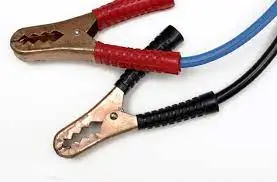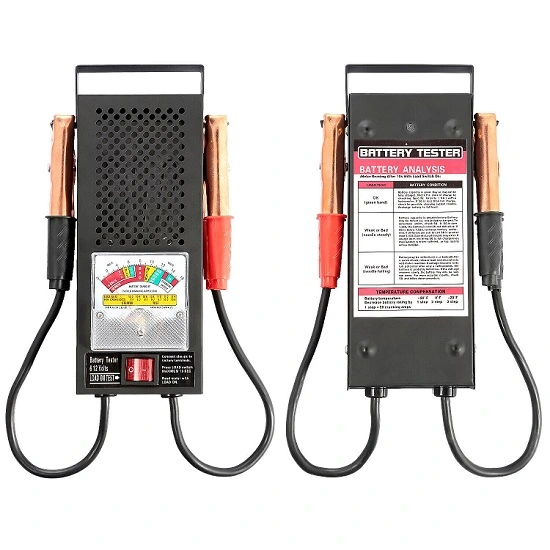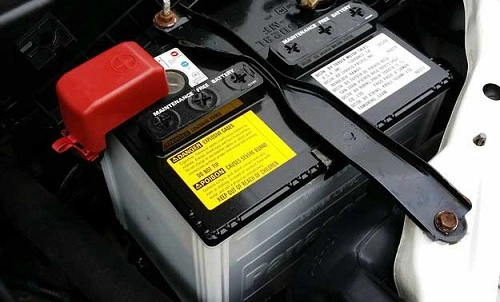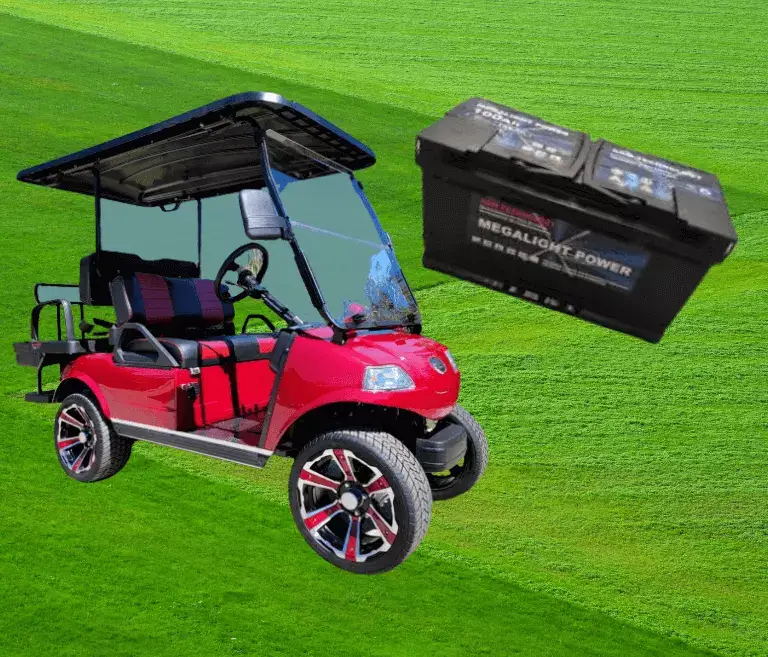How To Trick Golf Cart Charger? [Charging Dead Batteries]
Golf cart batteries can die unexpectedly, leaving you stranded on the course or unable to use your cart. But don’t despair – it’s possible to revive dead golf cart batteries by tricking the charger. Chargers are designed to stop charging when the battery is full, so they won’t charge a completely dead battery. However, with a few clever tricks, you can trick your golf cart charger into charging a dead battery.
In this comprehensive guide, we’ll take you step-by-step through several methods of tricking your golf cart charger. With the right techniques and safety precautions, you can bring old batteries back from the dead. Read on to learn how to make your charger charge again!
Things You’ll Need Before you get started, make sure you have the following:
- Golf cart charger
- Jumper cables
- A multimeter
- Fully charged 12V battery
- Cables and alligator clips
- Battery load tester
- Eye protection and gloves
Safety First! Charging dead lead-acid batteries poses risks such as explosive gas formation, acid leaks, overheating and more.
- Safety should always be your first priority!
- Work in a well-ventilated area away from sparks and flames.
- Wear eye protection and rubber gloves.
- Follow all instructions carefully.
- Monitor the charging process at all times.
- Stop charging immediately if you notice any problems.
- Use only chargers designed for golf cart batteries.
- Consult a professional if you are unsure.
Taking the proper safety precautions will protect you and your equipment. Let’s look at different ways to beat cart chargers!
Use Jumper Cables to Jumpstart Charging

Jumper cables allow you to connect the dead battery to a fully charged battery, essentially “tricking” the charger into thinking the dead battery has enough voltage to accept a charge.
Here are the steps:
- Disconnect the charger from any power source and the dead battery.
- Take your jumper cables and connect the red positive (+) terminal to the positive terminal of the charged battery.
- Connect the other red positive terminal to the positive terminal of the dead battery.
- Attach a black negative (-) terminal to the negative terminal of the charged battery.
- Attach the other black negative clamp to the negative terminal of the dead battery.
- Plug in and turn on the charger attached to the dead battery. It should now begin charging.
- Carefully monitor the charging process and watch for overheating.
- When fully charged, turn off and unplug the charger before removing the jumper cables.
The jumper from the good battery will trick the charger into working! But be extremely careful, as this method can overheat the batteries if done incorrectly.
Using a load tester to test voltage

You can also use a battery load tester to trick the charger. A load tester temporarily adds a load to the battery. This raises the voltage just enough for the charger to engage.
Follow these steps to use a load tester:
- Make sure the charger is unplugged from any outlet or battery.
- Connect the clips of the load tester to the terminals of the dead battery.
- Plug in the charger to begin charging. The voltage should now be high enough.
- Monitor the charge level and unplug the charger when fully charged.
- Disconnect the load tester before unplugging the charger.
The temporary load will provide the voltage boost needed to revive the dead battery. Be very careful, however, as load testers can also overcharge batteries if used improperly.
Using a series connection to combine voltage

You can connect two dead batteries in series to combine their voltage and trick the charger.
Follow these safe steps:
- Disconnect the charger from any outlet or battery.
- Use alligator clips to connect the positive terminal of the first dead battery to the negative terminal of the second dead battery.
- Leave the remaining positive and negative terminals of the end batteries open.
- Attach the charger leads to the open terminals at the end of the chain.
- Plug in the charger and monitor the charging process.
- When fully charged, unplug the charger and remove the cable connections.
Although this method requires multiple batteries, combining their voltages may provide enough power to begin charging again. Never leave this setup unattended.
Try using an alternator to regulate voltage

Using a car alternator is another way to trickle charge a dead battery. The alternator regulates the output voltage while the battery determines the current draw.Follow these precautions when using an alternator:
- Disconnect all chargers from the dead battery.
- Connect the alternator leads to the battery terminals.
- Start the alternator and monitor voltage and temperature.
- Stop charging if voltage exceeds 15V or battery overheats.
- When fully charged, turn off the alternator before disconnecting.
Automotive alternators can safely charge dead batteries by pulsing the correct voltage. But be prepared to turn it off if problems arise. Never leave it unattended.
Try a Computerized Battery Tender

Computerized battery tenders are designed to deliver a precise charge voltage to gently charge and maintain batteries. This automatic regulation eliminates problems such as overcharging.
Here are some tips for using a battery tender:
- Unplug all chargers and disconnect the tender from power sources.
- Connect the battery tender leads to the terminals on the dead battery.
- Plug in the battery tender and select the appropriate charging voltage, if adjustable.
- Allow the battery tender to automatically charge the battery until it is fully charged.
- At the end of the charge cycle, unplug the battery tender before disconnecting the leads.
Battery tenders are safe for unattended charging and maintenance. Just be sure to select the proper voltage and charge time based on the battery specifications.
Remove Sulfate Buildup with Epsom Salts

If your battery won’t take a charge because of sulfate crystallization, Epsom salts can help dissolve the buildup and make the plates receptive again.
Here are the steps to using Epsom salts:
- Disconnect all chargers connected to the battery terminals.
- Open the caps and fill each cell with 1/8 cup of Epsom salt solution until the plates are submerged.
- Allow to sit for at least 8 hours, up to 24 hours. This will allow time for the salts to break down the sulfation.
- When the time is up, add distilled water and charge as usual.
The Epsom salts will dissolve the harmful sulfate buildup that prevents charging. Just be careful not to overfill and use distilled water when finished.
Pre-charging with a low voltage source

You can pre-charge a dead battery by using a low-voltage source, such as a 5-volt USB charger, to get it ready for a normal charge.
Here is a safe procedure:
- Disconnect all high voltage golf cart chargers from the battery.
- Connect the USB charger leads to the battery terminals.
- Slowly charge the battery at 5V for several hours.
- The lower voltage will precharge the battery enough for a full charge.
- Disconnect the USB charger and connect your regular golf cart charger.
Pre-charging will give the battery a little voltage so the regular charger can take over. Just monitor the temperature and voltage to prevent problems.
Golf Cart Battery Charging Tips
To extend the life of your batteries and avoid charging problems, follow these important golf cart battery maintenance tips:
- Always use the recommended charger voltage and amperage for your specific batteries. Undercharging or overcharging will damage batteries.
- Charge batteries only in well-ventilated areas away from ignition sources. Charging generates explosive hydrogen gas.
- Check water levels regularly and top up with distilled water as needed. Low water levels will affect charging.
- Ensure that battery connections are clean and secure before charging. Corrosion and loose terminals will prevent proper charging.
- Consider using desulphation methods such as Epsom salts to remove sulphate build-up and improve charging capacity.
- Avoid over-discharging batteries. Deep discharges can prevent batteries from accepting a charge.
- Store batteries properly when not in use. Do not expose them to extreme heat or cold.
Following safe charging and maintenance procedures will maximize the health and life of your batteries. However, if tricks are needed to revive a dead battery, take all precautions and consider replacing the battery once revived. Dead batteries tend to have shorter lifespans and are unreliable. But with the right tricks and care, you can squeeze a little more life out of them in a pinch. Just charge responsibly!
There are several potential causes for a golf cart battery to die unexpectedly: deep battery discharge, loose or corroded connections, failing or old batteries, exposure to extreme heat or cold, lack of maintenance, and more. Preventive maintenance, such as charging after each use and checking connections, can help prevent sudden failure.
Yes, using jumper cables to connect the dead battery to a fully charged battery can successfully trickle charge the dead battery. Just be sure to monitor the process closely and disconnect when fully charged to avoid the risk of overcharging.
It typically takes 8-24 hours for the Epsom salt solution to dissolve the sulfate crystals when added to the battery cells. Make sure the plates are fully submerged. At the end of the allotted time, rinse the cells with distilled water before recharging them.
Key safety precautions include charging in a well-ventilated area, wearing protective clothing, monitoring charge levels, stopping if overheating occurs, avoiding sparks or flames, using recommended charger settings, and disconnecting the charger before disconnecting the battery cables.
It’s generally best to replace a battery that won’t hold a charge even after reconditioning attempts. Deeply discharged, sulfated or old batteries often cannot be recovered. Replacement ensures reliable performance and avoids the risks of trying to recharge stubborn batteries.

